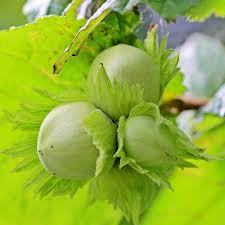Written by Benedict Vanheems | 13 November 2014
Nuts are a delicious and nutritious addition to any meal, especially during the colder months when roasted nuts are a cozy treat. Whether you enjoy them straight from the shell, roasted over an open fire, or added to savory dishes, hazelnuts are an excellent option. However, buying nuts in bulk can quickly become expensive. The solution? Grow your own hazelnuts!
Many gardeners hesitate to grow nuts, thinking they need a vast amount of space or are difficult to manage. While large trees like walnuts or chestnuts can be intimidating, hazelnuts (Corylus species) are much more manageable and ideal for garden spaces. In fact, hazelnuts can provide both beauty and a harvest in your backyard.
The Appeal of Hazelnuts
Hazelnuts are the easiest nut to grow and can thrive in garden settings. The Corylus genus includes varieties like the common hazel, cobnuts, and filberts. The key difference between hazels and filberts lies in the husk—the husk of a filbert completely encloses the shell, while hazelnuts and cobnuts have a partial husk.
In late winter to early spring, hazelnuts produce lovely, drooping yellow catkins, which are the male flowers that release pollen to fertilize the female flowers. This wind-pollinated process requires open spaces, making hazelnuts ideal for gardens with good airflow. Not only are they hardy, surviving both cold winters and wet conditions, but they also bring an aesthetic appeal to your garden. Varieties like the corkscrew hazel Corylus avellana ‘Contorta’, known for its twisted stems, and the purple-leaved Corylus maxima ‘Purpurea’, with its purple-husked nuts, add visual interest.

Hazelnuts are also valuable for wildlife, providing food and shelter when grown as part of a hedgerow.
How to Grow and Care for Hazelnuts
Hazelnuts thrive in well-drained soil with moderate fertility. Overly rich soil encourages excessive leaf growth at the expense of nut production. While hazelnut trees produce both male and female flowers, they are not self-pollinating, so it’s best to plant multiple trees for effective pollination. Hazelnut plants are often grown as shrubs, making them easier to manage compared to full-sized trees.
When planting hazelnuts, space your trees about 4 meters (15 feet) apart, and include different varieties to maximize pollination. Check that your selected varieties flower at the same time to ensure successful pollination.

Hazelnut Pruning and Maintenance
Caring for hazelnuts is simple. Prune them in winter to encourage a healthy, open structure. Remove about a third of the oldest growth, cutting back stems to ground level, and clear out overcrowded areas to allow light and air circulation. It’s important to remove crossing branches, but leave the younger, twig-like growth, as these bear most of the female flowers.
Hazelnut plants may also produce suckers, or shoots growing from the plant’s roots. These can spread the plant’s growth and crowd the center, so remove them promptly to maintain the plant’s shape and health.

Harvesting Hazelnuts
Hazelnuts are ready for harvest in fall when the husks turn yellow. You can pick them directly from the tree or gently shake them onto a sheet or tarpaulin. Once collected, store your nuts in a dry, airy place using crates, nets, or slatted boxes.
Protecting Your Hazelnuts from Squirrels
Squirrels are notorious for their love of hazelnuts, so protecting your harvest can be challenging. While enclosing your trees in a mesh cage might be one solution, it’s not always practical. The best approach is vigilance—harvest your nuts promptly, even if they are slightly under-ripe, before the squirrels take their share.
To dry your nuts, spread them on trays and turn them every few days. Dry them indoors in a warm, dry spot for two to three weeks. Once fully dry, you can remove the husks and store the nuts, either in or out of their shells.
Final Thoughts
Growing hazelnuts is an incredibly rewarding experience, from the joy of harvesting your own fresh nuts to the added beauty they bring to your garden. For those who grow hazelnuts, cobnuts, or filberts, we would love to hear about your experiences. Do you have tips for protecting your crops from squirrels? How do you use hazelnuts in the kitchen? Share your thoughts and advice in the comments below!
